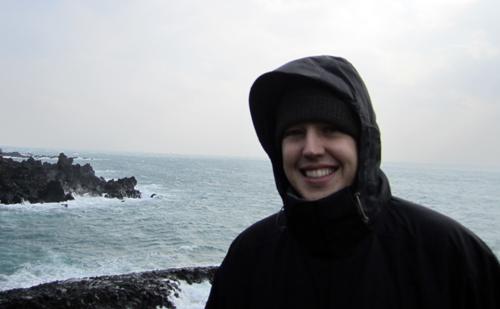Last Chance Tourism Offers Fading Glimpse of Culture, Environment

atGuelph Story
Written by Teresa Pitman
You’ve heard that the glaciers in Alaska are rapidly disappearing, or that the rainforest around the Amazon River will be destroyed over the next few decades. Do you want to see these sites before they’re gone?
“It’s called ‘last chance tourism,’” explains tourism management professor Justin Taillon. “It’s about being motivated to visit particular destinations because you believe that they soon will no longer exist. It can be a bit macabre, but it’s also a natural human impulse.”
Most often people think of places or environments that are on their way out, but Taillon takes a slightly different approach: he’s working to support socio-cultural last chance tourism where communities whose culture is at risk of disappearing invite outsiders to learn more about their way of life.
One example is the Haenyo people who live on Jeju Island near Korea. Traditionally, women of the community gathered food by diving deep into the water and bringing up seafood in their bare hands. Now, however, the younger girls and women are not interested in learning the skills needed for this food-gathering activity, so the remaining divers are all 50 or older.
“Some can barely walk,” says Taillon, “but they can still swim. They actually come out of the water and get into a wheelchair.” Tourists have discovered these unique divers and are travelling to the island to see them in action. When the last of these women passes away, there will be no more divers on Jeju Island. Taillon calls it last chance tourism in its purest form.
But this type of tourism can be tricky. When tourists fly to the Arctic to see the disappearing ice, they may not realize that taking that trip may contribute to environmental damage in the area. In the same way, tourists visiting a remote tribe may hasten the destruction of the culture. Taillon’s goal when he works with these communities is to protect their culture and make the process sustainable, but he admits it’s not always easy.
“I have been working with the Ese’eja indigenous tribe in Peru,” he says. “The original challenge was that the locals feel that they need to give tourists what they think the tourists want. They think they need to build a swimming pool because the tourists want one. They didn’t see their culture as significant.”
During his involvement, Taillon says, he has made considerable progress in helping marginalized populations understand that tourists want to come and learn about their culture, and they aren’t looking to stay in just another luxury hotel. He has helped them find the right mix of accommodations and activities that both convey a sense of the culture and meet the tourists’ desire for familiar comforts. “They tell me now that they are proud to be Ese’eja,” he says.
More recently, Taillon has been involved with the Samburu tribe in Kenya for the past six months. This tribe was brought to international attention about 10 years ago when Harvard University professor Tina Ramme documented the attacks against them. The Kenyan government was seeking to remove the tribe from their land because a Chinese company wanted to build a highway there.
Ramme was the first Caucasian person some of the Samburu had ever seen, but as the world became more aware of their plight – the CBC labelled the situation “genocide” – more tourists came to visit them. Now Taillon is working with them to manage the tourism and ensure that it is sustainable.
The project includes one area where people can stay in traditional buildings equipped with tents for glamorous camping – or “glamping,” a popular trend in North America – that have running water and showers. Buffet-style meals are cooked on stainless steel barbecues, but the hosts wear traditional clothes, and the menu includes some traditional foods.
Taillon admits that the tourists visiting these communities change the culture. “Yes, there are changes, but there would be changes anyway. This way, the indigenous people are teaching the tourists about their culture, their heritage and the natural surroundings. Without it, there would be mining or logging or other unsustainable and much more harmful industries moving in. Maintaining the status quo is just not possible.”
Part of what makes last chance tourism so popular, he adds, is “travel bragging.” If you can see something before it disappears, that gives you a little status among your friends once it’s gone. “Many Canadians choose to go to Cuba because Americans can’t,” he points out. “They can brag about that to their American friends.” For others, it’s a different kind of last chance tourism: they anticipate that the tourist experience will change dramatically once other tourists are able to travel there.
Despite the potential for risks, he sees real benefits for last chance trips. “There are places and peoples all over the world who deserve to be seen and remembered and perhaps even saved.”